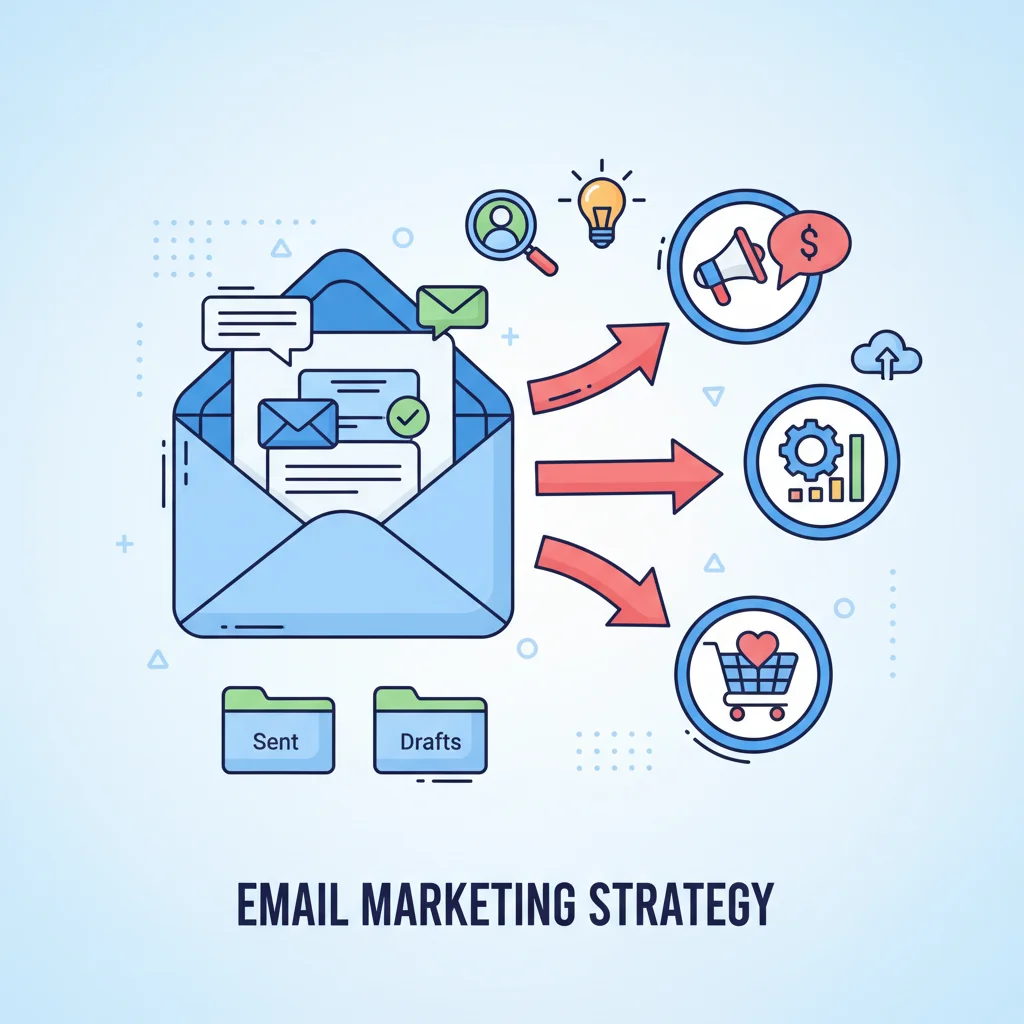Now Reading: Email Marketing Laws: Essential Legal Requirements Explained
-
01
Email Marketing Laws: Essential Legal Requirements Explained
Email Marketing Laws: Essential Legal Requirements Explained

Are your marketing emails breaking the law without you even realizing it? With complex regulations like CAN-SPAM, GDPR, and CASL governing email communications worldwide, understanding the legal requirements for email marketing has never been more important. In this guide, I’ll demystify these laws and give you a clear roadmap to compliance.
Key Takeaways
What are the legal requirements for email marketing? Here’s what you need to know:
- Get permission first: Most laws require explicit consent before sending marketing emails
- Include clear identification: Your business name, physical address, and contact information must be present in every email
- Provide an unsubscribe option: Every marketing email must include an easy way to opt out
- Use honest subject lines: Subject lines must accurately reflect email content
- Honor opt-out requests promptly: Most regulations require processing unsubscribe requests within 10 days
- Maintain records: Keep proof of consent and opt-in data
- Comply with regional laws: Different rules apply depending on recipient location (CAN-SPAM, GDPR, CASL, etc.)
Understanding Email Marketing Laws Around The World
CAN-SPAM Act (United States)
The Controlling the Assault of Non-Solicited Pornography And Marketing Act (what a mouthful!) has been the law of the land in the US since 2003. Despite its name, it doesn’t just apply to bulk emails-it covers ALL commercial messages.
Here’s what CAN-SPAM requires:
- Honest header information: Your “From,” “To,” and “Reply to” fields must accurately identify who’s sending the email
- Truthful subject lines: No clickbait or deception allowed
- Identification as an advertisement: Recipients need to know when they’re looking at a marketing message
- Physical address: Include your business’s postal address in every email
- Visible unsubscribe option: Make it easy for people to opt out
- Honor opt-outs within 10 days: Once someone says “no more,” you’ve got to respect that quickly
- Monitor third parties: If you hire someone to handle your email marketing, you’re still responsible for compliance
Breaking these rules could cost you up to $51,744 per email. Yikes! That’s enough to put many small businesses underwater fast.
GDPR (European Union)
The General Data Protection Regulation is probably the strictest privacy law on the planet. If you’re emailing folks in the EU, you need to pay attention to this one.
GDPR requirements include:
- Explicit consent: Pre-checked boxes don’t count! People must actively choose to receive your emails
- Clear privacy information: Tell people exactly how you’ll use their data
- Data access rights: Recipients can request to see, correct, or delete their information
- Documented proof: Keep records showing when and how people opted in
- Easy opt-out: Unsubscribing must be simple
Penalties for GDPR violations are even scarier than CAN-SPAM-up to €20 million or 4% of annual global turnover, whichever is higher. That’s not a typo!
CASL (Canada)
Canada’s Anti-Spam Legislation is considered one of the strictest anti-spam laws globally. If you’re emailing Canadians, here’s what you need to know:
- Express or implied consent: You need permission before sending emails
- Clear identification: Identify yourself and provide contact information
- Unsubscribe mechanism: Must be functional for at least 60 days after sending
Violations can result in penalties up to $10 million for businesses and $1 million for individuals. Canada doesn’t mess around!
UK PECR
The UK’s Privacy and Electronic Communications Regulations work alongside their version of GDPR. Key requirements:
- Consent required: Similar to GDPR, you need permission
- Clear sender identification: No hiding who you are
- Opt-out option: Must be included in every message
Australia’s Spam Act
For those emailing folks down under:
- Consent required: Either explicit or inferred consent
- Sender identification: Clear information about who’s sending the email
- Unsubscribe option: Must be included and honored
Useful Articles:
Essential Legal Requirements For All Email Marketing
No matter where your recipients are located, certain principles apply across most email marketing laws. Let’s dive into the practical steps you need to take.
Getting Proper Consent
Most email marketing laws require some form of consent before you start sending promotional messages. But what counts as “consent” varies:
- Explicit consent: Someone actively opts in by checking a box or signing up for your emails
- Implied consent: An existing business relationship where email marketing would be reasonably expected
For the strictest compliance (especially with GDPR), you should:
- Use unchecked opt-in boxes
- Clearly explain what they’re signing up for
- Keep records of when and how they opted in
- Consider double opt-in for extra protection
Here’s a good consent statement example:
“I agree to receive marketing emails from [Your Business]. I understand I can unsubscribe at any time.”
Proper Identification Requirements
Every marketing email you send should clearly identify:
- Who you are (business name)
- Where you’re located (physical address)
- How to contact you (email or phone)
This information typically goes in the footer of your email. Don’t try to hide it in tiny text-that looks sketchy and could violate transparency requirements.
Creating Compliant Unsubscribe Mechanisms
Every. Single. Marketing. Email. Must have an unsubscribe option. No exceptions!
Your unsubscribe mechanism should be:
- Easy to find: Typically in the footer
- Simple to use: One click is ideal, two clicks maximum
- Persistent: Must work for at least 30-60 days after sending
- Free: No charging fees to unsubscribe
- No-nonsense: Don’t require passwords or excessive information
Most email service providers like Mailchimp or Constant Contact handle this automatically, which is one good reason to use them instead of sending from your regular email account.
Subject Line Compliance
Subject lines seem simple, but they’re actually a common compliance pitfall. The rule is straightforward: don’t be deceptive.
Examples of non-compliant subject lines:
- “RE: Our conversation” (when there was no previous conversation)
- “Your account statement” (for a promotional email)
- “You’ve won $500!” (when there’s no actual prize)
Instead, use subject lines that honestly reflect what’s inside the email. You can still be creative and compelling without being misleading!
Processing Opt-Out Requests
Once someone unsubscribes, you need to:
- Stop sending them marketing emails promptly (within 10 business days in the US)
- Keep their email on a suppression list so they don’t get accidentally added back
- Not charge any fees or create barriers to unsubscribing
- Not sell or transfer their email to another entity
This is super important! Continuing to email people after they’ve opted out is one of the fastest ways to get reported for spam.
Special Requirements By Region
While the basic principles are similar, each region has unique requirements you should be aware of if you’re targeting those audiences.
US-Specific Requirements
In addition to the CAN-SPAM basics, US marketers should know:
- You don’t technically need prior consent to email someone (though it’s still best practice)
- Each separate email violation can result in penalties up to $51,744
- The FTC enforces CAN-SPAM and actively pursues violators
- B2B emails are also covered under CAN-SPAM
EU-Specific Requirements
For EU recipients, remember:
- Consent must be “freely given, specific, informed, and unambiguous”
- You must document and be able to prove consent
- Privacy notices must be clear and accessible
- Data subjects have the right to access, correct, and delete their data
- Data breaches must be reported within 72 hours
Canada-Specific Requirements
When emailing Canadians:
- Consent can expire if unused for a certain period
- You need to identify the person who obtained consent
- Third-party referrals have special rules
- Unsubscribe mechanisms must remain active for at least 60 days
UK-Specific Requirements
For UK recipients:
- Similar to GDPR but with some Brexit-related modifications
- Be careful with “forward to a friend” features as they can create compliance issues
- Corporate subscribers have different rules than individual subscribers
Useful Articles:
Practical Implementation Tips
Now that you understand the requirements, let’s talk about how to actually implement them in your email marketing.
Setting Up Compliant Opt-In Forms
Your signup forms are your first line of defense. Make sure they:
- Use unchecked boxes for consent
- Clearly explain what people are signing up for
- Link to your privacy policy
- Avoid bundling multiple types of consent together
- Consider using double opt-in for extra protection
Here’s a good example:
[ ] Yes, I'd like to receive marketing emails from [Your Company]. You can unsubscribe at any time. See our Privacy Policy for more information.Creating a Compliant Email Template
Save yourself headaches by creating a template that already includes all required elements:
- Your business name clearly displayed
- Physical mailing address in the footer
- Unsubscribe link in a standard location
- Clear sender information
- Privacy policy link
Most email service providers offer compliant templates, but always double-check against the specific laws that apply to your audience.
Managing Your Email List Legally
Good list hygiene isn’t just about deliverability-it’s about legal compliance too:
- Regularly clean your list of bounces and inactive subscribers
- Maintain records of how and when people opted in
- Use a suppression list for unsubscribes
- Segment your list by geography if you need to apply different rules
- Never buy email lists (seriously, don’t do it!)
Working With Email Service Providers
Most reputable email service providers (ESPs) have built-in compliance features:
- Automatic unsubscribe links
- Physical address requirements
- List management tools
- Consent tracking
But remember: using an ESP doesn’t transfer legal responsibility. You’re still on the hook if something goes wrong!
Email marketing laws might seem overwhelming at first, but they’re actually pretty straightforward once you understand the basics. Get permission, be transparent, make unsubscribing easy, and keep good records. Follow these principles, and you’ll not only stay legally compliant but also build trust with your audience-which is what email marketing is all about anyway.





















